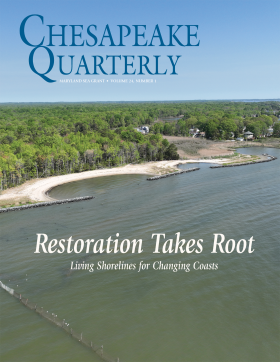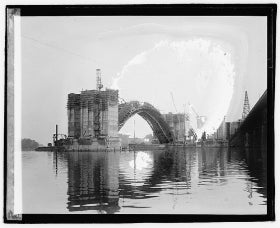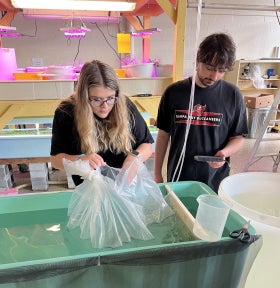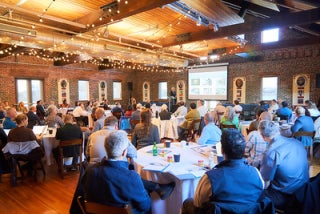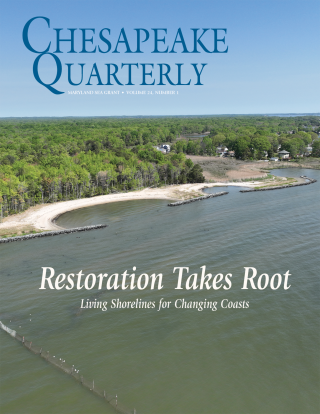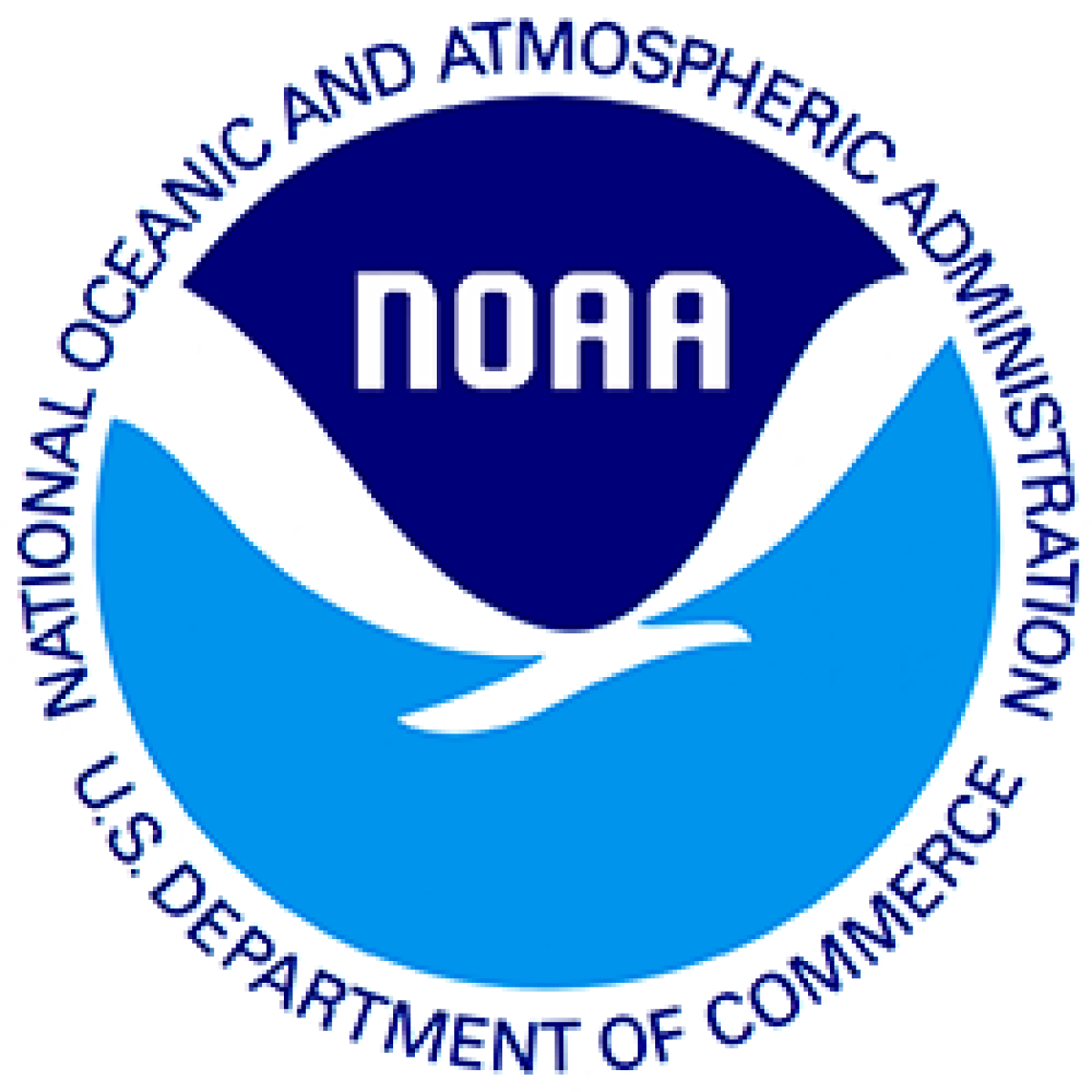Knauss legislative fellowships in Congress help build careers — and they're fun and educational. See our video and fact sheet for details.
The Maryland Sea Grant Bookstore will be closed for the winter holidays from Monday, December 15th to Friday, January 3rd and will not be taking orders during that time.
What's New
Maryland Sea Grant publishes blogs, Chesapeake Quarterly magazine, and other publications and videos. Learn about scientific research and science-based practices that can help preserve the Chesapeake Bay and Maryland's coastal environment.
Chesapeake Quarterly
Restoration Takes Root: Living Shorelines for Changing Coasts
Living shorelines protect coastal areas from erosion using natural materials. In this issue, learn about how science steers shoreline restoration projects around the Chesapeake Bay.
Fellowship Experiences: A Students' Blog
Lessons in Supporting the Bay’s Next Seven Generations
On the Bay: Chesapeake Quarterly's Blog
Bringing Aquaculture to Agriculture Classrooms
News Releases
All posts
Coloring Pages

Wildlife of the Maryland Salt Marshes Coloring Page
Get to know the wildlife of a Chesapeake Bay marshland in this downloadable coloring page. Download and print the coloring page.
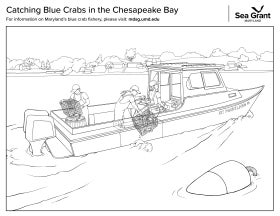
Catching Blue Crabs in the Chesapeake Bay Coloring Page
Blue crabs are a popular catch in the Chesapeake Bay. Download and print the coloring page.
